Ohio Is Home to 76 National Historic Landmarks... These 10 Are the Best Ones to Visit
Located in the Midwestern region of the United States is the Buckeye State. Known as the birthplace of aviation, Ohio has a legacy of innovation, wildlife, and history. With bustling cities like Cincinnati, Cleveland, and Columbus, there is much to do in the state. One way to appreciate Ohio’s history is by visiting one of its many historic sites. Distributed across 37 of the 88 counties in the state, there are a total of 76 National Historic Landmarks. Hamilton County is the most historic place in Ohio, with a total of 14 nationally recognized historic landmarks within its borders. Read on to explore the top 10 best national historic landmarks to visit in Ohio!
What Are National Historic Landmarks?
What do the Statue of Liberty, Mount Rushmore, and Alcatraz Island all have in common? Well, they are all examples of famous National Historic Landmarks in the United States. National historic landmarks, shortened to NHLs, are historic properties that display the heritage, culture, and/or past customs of a country. In the United States, these landmarks are classified and made official by the Secretary of the Interior.
While many of them differ greatly in meaning, location, and quality, all NHLs are important. This is mainly because they help preserve nationally impactful historic events and places for future learning or education. They also work to preserve the memory of notable historical figures in our nation’s past — both good and bad.
Today, 2,600 NHLs exist within the U.S. — and the number is still growing! Coming in a variety of forms, the NHLs found throughout the country include preserved buildings, sites, structures, monuments, or even objects. Regardless of what they physically are, all national historic landmarks represent our nation’s incredible history.
How Does a Property Become a National Historic Landmark?
The National Park Service is responsible for determining all of the national historic landmarks in the United States. They have overseen the care and preservation of National Historic Landmark Sites since 1960. The first ever NHL in the United States was the Salem Maritime National Historic Site in 1938. With a growing need for more of these sites, the National Park Service developed a set of rules and guidelines to follow to determine what landmarks should get the designation. The property is first evaluated for its national significance. Typically, the NHL program uses six main criteria to determine the national significance of these landmarks.
6 Criteria for Determining National Significance:
- Criteria 1: “Properties that are associated with events that have made a significant contribution to, and are identified with, or that outstandingly represent, the broad national patterns of United States history and from which an understanding and appreciation of those patterns may be gained.”
- Criteria 2: “Properties that are associated importantly with the lives of persons nationally significant in the history of the United States.”
- Criteria 3: “Properties that represent some great idea or ideal of the American people.
- Criteria 4: “Properties that embody the distinguishing characteristics of an architectural type specimen exceptionally valuable for a study of a period, style, or method of construction,or that represent a significant, distinctive and exceptional entity whose components may lack individual distinction.”
- Criteria 5: “Properties that are composed of integral parts of the environment not sufficiently significant by reason of historical association or artistic merit to warrant individual recognition but collectively compose an entity of exceptional historical or artistic significance, or outstandingly commemorate or illustrate a way of life or culture.”
- Criteria 6: “Properties that have yielded or may be likely to yield information of major scientific importance by revealing new cultures, or by shedding light upon periods of occupation over large areas of the United States. Such sites are those which have yielded, or which may reasonably be expected to yield, data affecting theories, concepts and ideas to a major degree.”
After the significance is determined, the overall integrity of the landmark is analyzed. Most of the time, this is the process each national historic landmark goes through to gain its prestigious title. Special considerations are given to new NHLs on rare occasions. Next up, we will uncover the top 10 best national historic landmarks in Ohio!
10. Cincinnati Music Hall
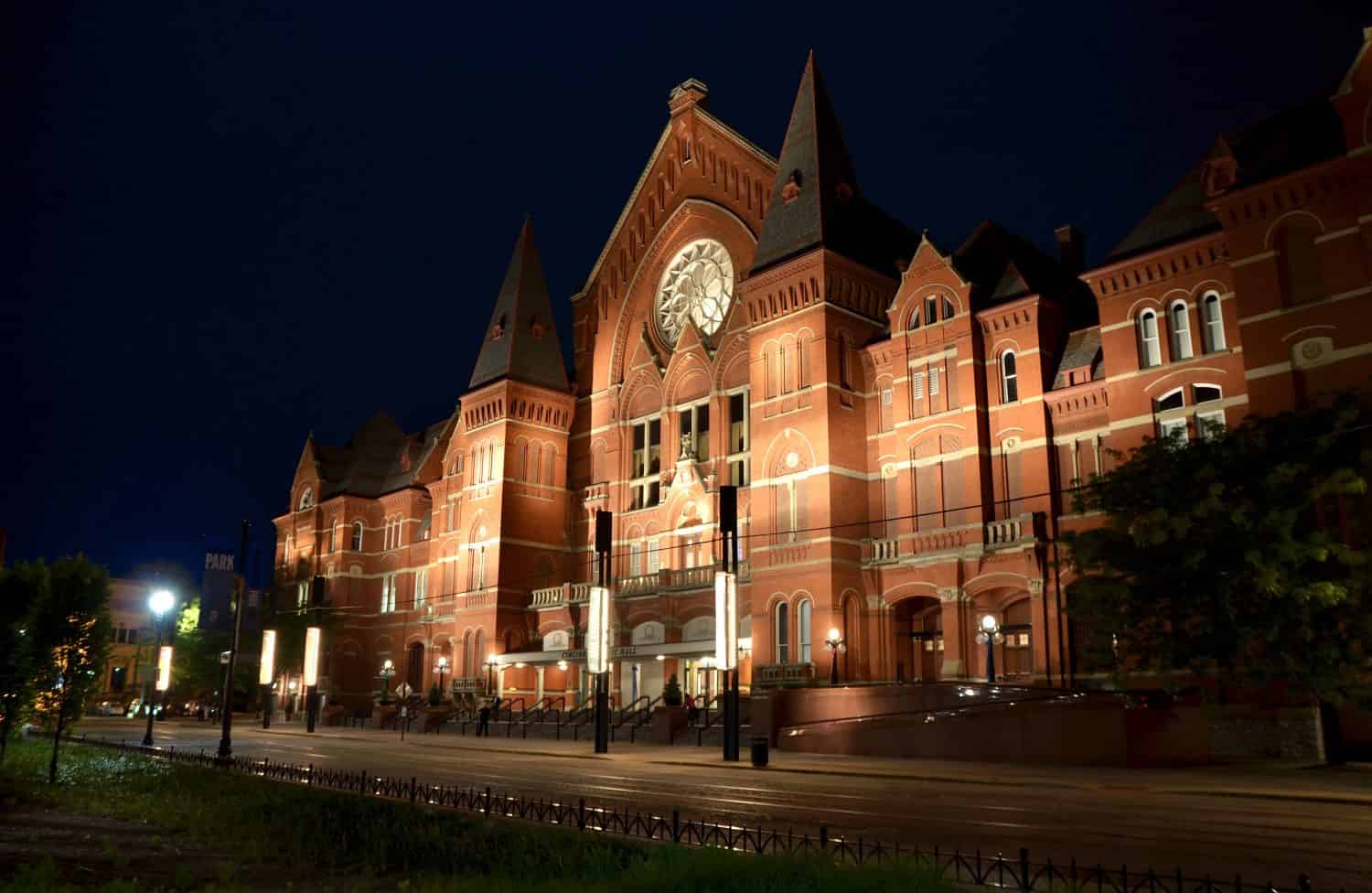
©Berry Medley/Shutterstock.com
Built in 1878, the Cincinnati Music Hall is a historic landmark most popular for its prominent role in the city’s musical and cultural history. It is one of the largest theaters and ballrooms in the state. The Cincinnati Music Hall consists of three main structures, with expansive outdoor courtyards dividing them. This venue has housed many notable performances from the Cincinnati Ballet, Cincinnati Symphony Orchestra, Cincinnati Opera, and the May Festival Chorus. In addition to its musical achievements, this venue is well known for its stunning Victorian-gothic architecture. It is interesting to note that the Cincinnati Music Hall is also commonly regarded as one of America’s most haunted places!
9. Cincinnati Union Terminal
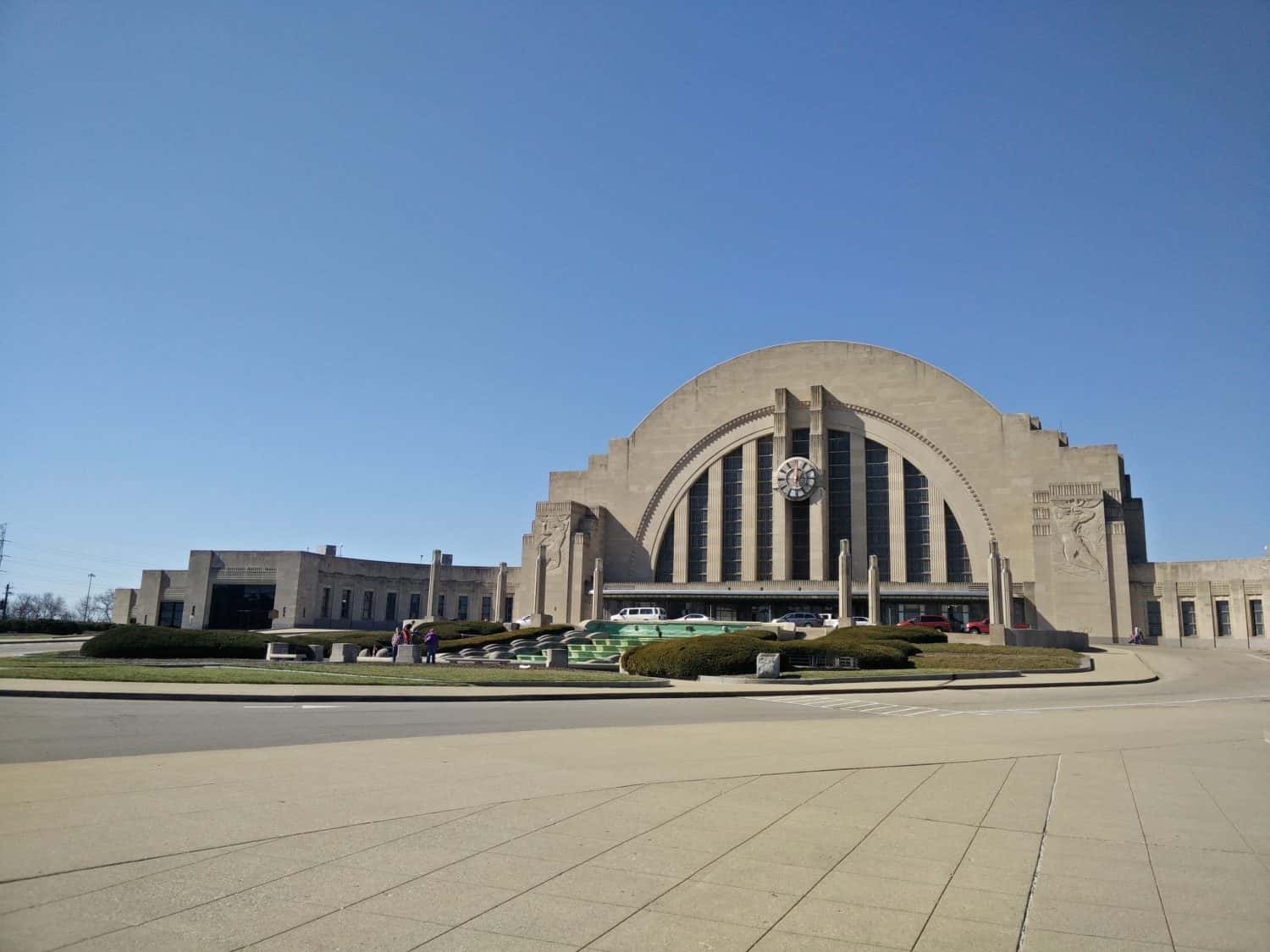
©DBrower/Shutterstock.com
When the Cincinnati Union Terminal was first built in 1833, it served as a railroad station. Made to accommodate over 17,000 passengers and 216 trains daily, it was a major hub for the people of Cincinnati. This historic site is still in use today, with Amtrak’s Cardinal line passing through the Cincinnati station three times weekly. This terminal is also the largest half-dome structure in the Western Hemisphere. The art-deco building also houses the Cincinnati Museum Center, which is a group of three museums including a library, theater, and the Holocaust & Humanity Center. Visitors to this iconic national historic landmark can take in the area’s rich history, admire its stunning architecture, or simply explore the grounds of this massive structure.
8. Eldean Bridge
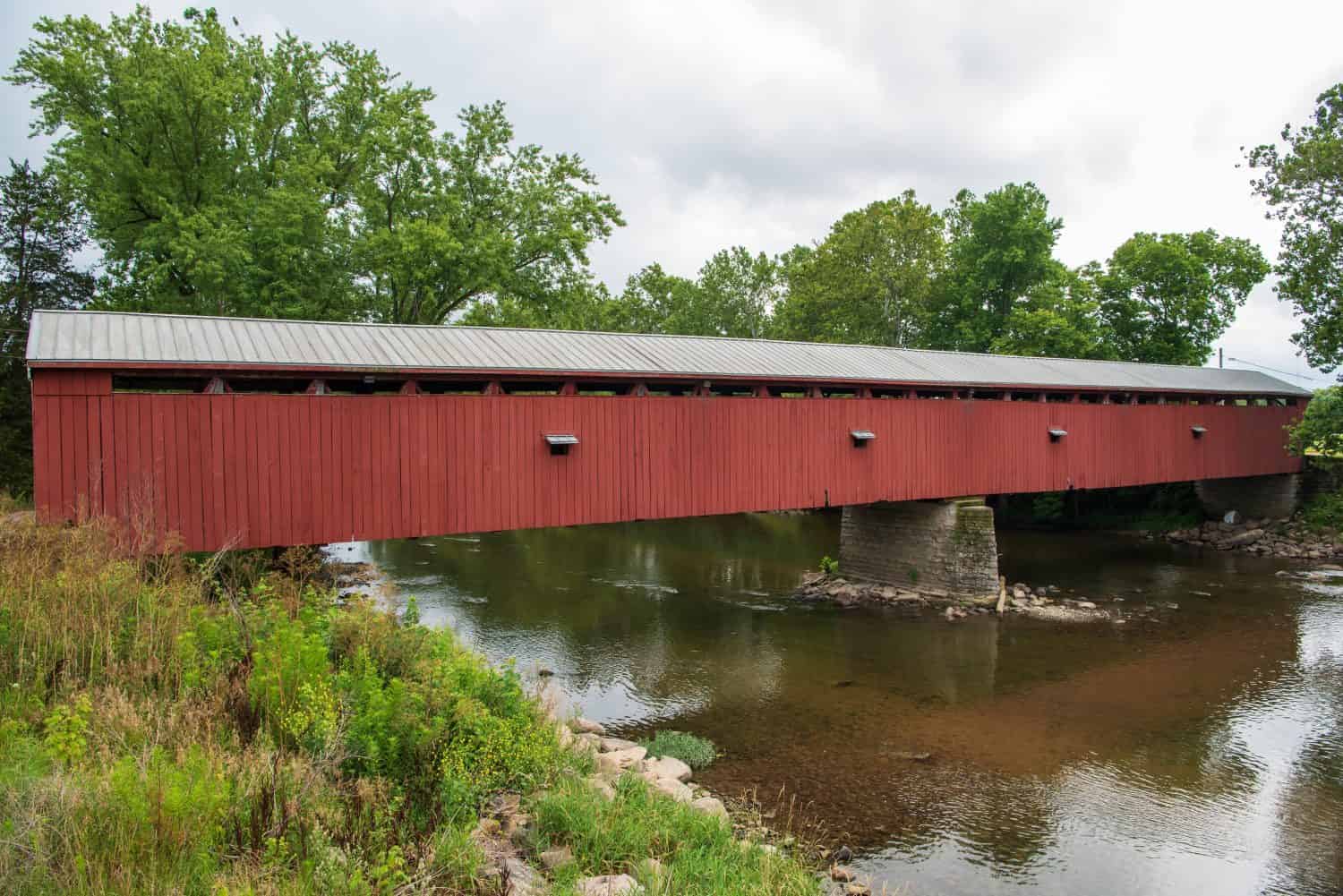
©Ralf Broskvar/Shutterstock.com
The historic Eldean Covered Bridge is a notable landmark in Ohio. Constructed in 1860, this 224-foot bridge was built by local builders James and William Hamilton. Painted in the traditional bright red color, this national historic landmark was once the second longest covered bridge in the state. Today, it is still the longest “long truss-style” bridge in the United States. This site is important because it is one of the two last remaining covered bridges in the county.
7. Fallen Timbers Battlefield
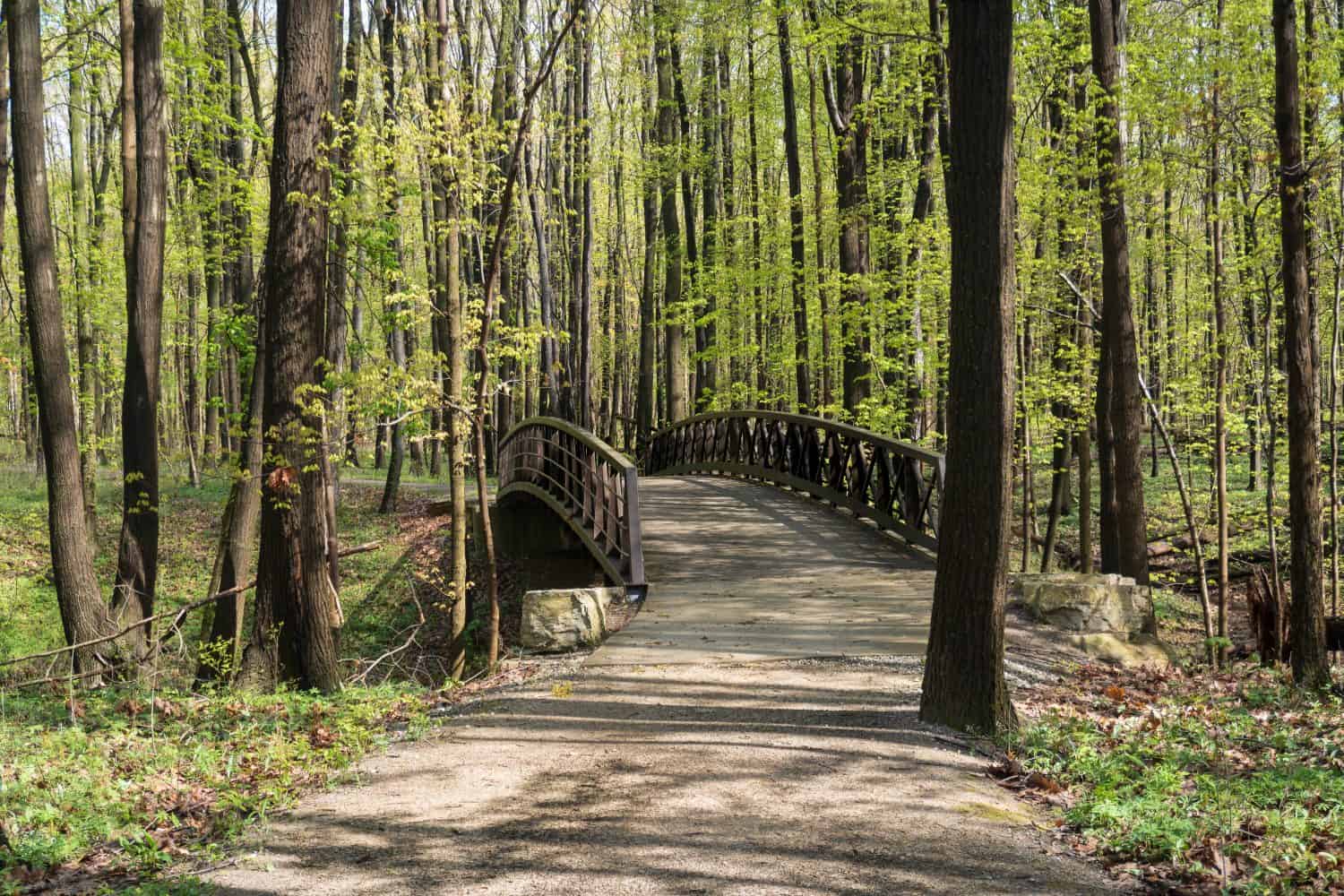
©EWY Media/Shutterstock.com
Fallen Timbers Battlefield National Historic Site is located in Maumee, Ohio. A very impactful battle occured at this location in 1794. This fight — led by General Anthony Wayne — was between the Western Confederacy of American Indian tribes and the United States Forces. The U.S. forces won, and this accomplishment marked the end of the Northwest Indian War. Today, you can explore the grounds of the battlefield and learn more about the significance of this fight. Additionally, there are numerous hiking trails that visitors can enjoy as well.
6. Fort Ancient Earthworks and National Preserve
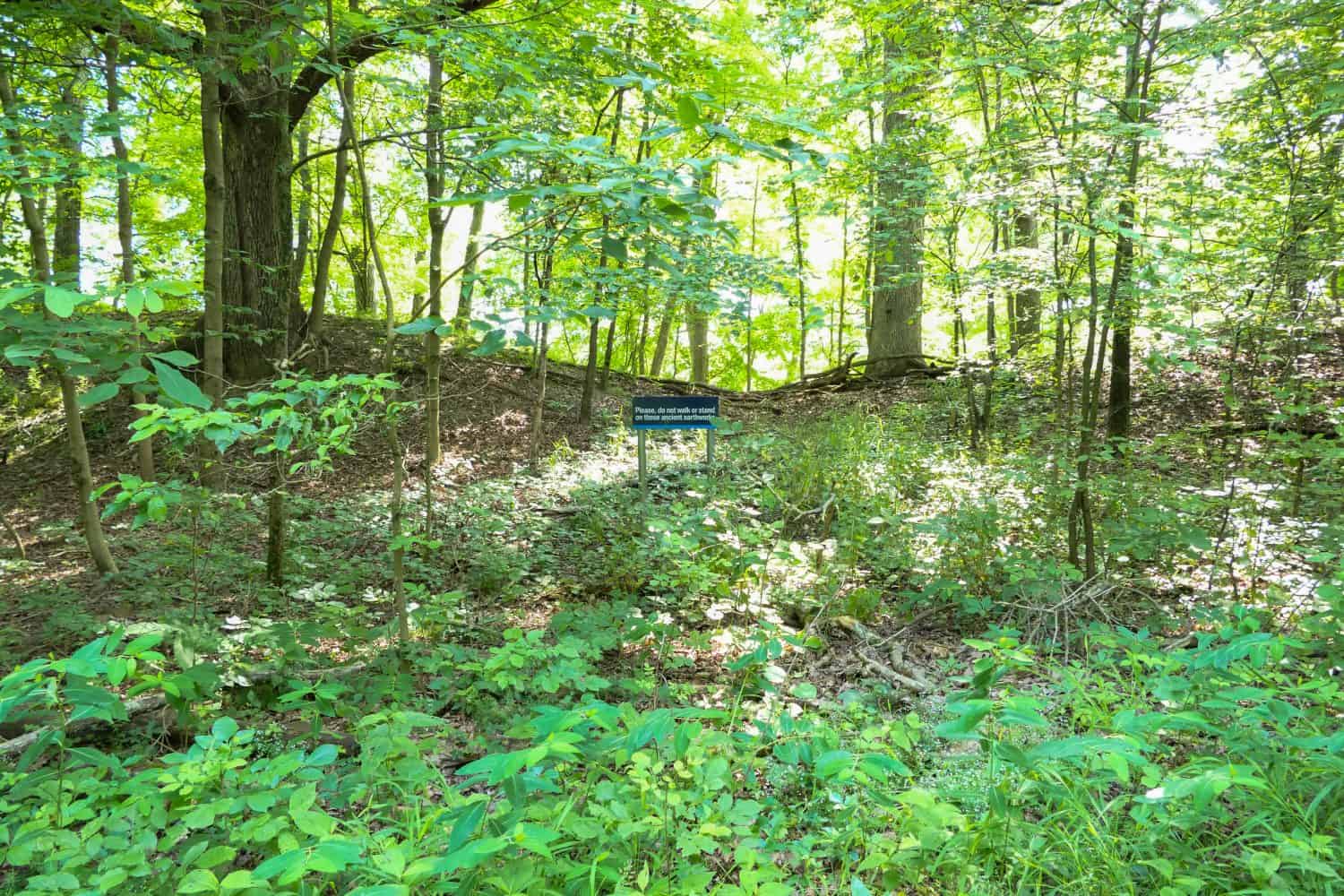
©Bentley Davis/Shutterstock.com
The indigenous Fort Ancient people were comprised primarily of farmers and hunters. They had permanent village sites where they had gardens filled with corn, squash, beans, and sunflowers. What they could not grow themselves, they hunted and harvested from the surrounding forests. The Fort Ancient Earthworks national historic landmark is located along the eastern shore of the Little Miami River and consists of over 126 acres of protected forests. This NHL is best for nature lovers as it contains a plethora of hiking trails, monuments, and enticing earthen embankments. Visitors to the area can observe their ceremonial and defensive structures as well as the lands that the indigenous people used to traverse.
5. Cincinnati Observatory

©Sean Pavone/Shutterstock.com
The Cincinnati Observatory, known by locals as Mt. Lookout Observatory, is another famous national historic landmark. It is an amazing site for both professional and amateur astronomers. Housing an 11-inch and 16-inch aperture refracting telescope, this observatory is still in use today! Dedicated as the “Lighthouse of the Sky” by our nation’s second president, this national historic landmark is the oldest professional observatory in the United States.
4. Plum Street Temple

©KenosisDre/Shutterstock.com
The Plum Street Temple, otherwise known as the Isaac M. Wise Temple, is one of the most visually appealing buildings in the state. This historic synagogue, designed by Cincinnati architect James Keys Wilson and built in 1866 for the B’nai Yeshurun Jewish congregation. It takes inspiration from the Byzantine-Moorish-style architecture that was popular in Germany throughout the 19th century. It is one of the best Moorish Revival buildings in the United States. There is actually only one other structure in the country with a similar design and it is located in New York City. The temple is still an active place of worship for the Jewish community in the city. Visitors can take part in religious ceremonies, admire the architecture, or take guided historic tours through the building.
3. The Arcade
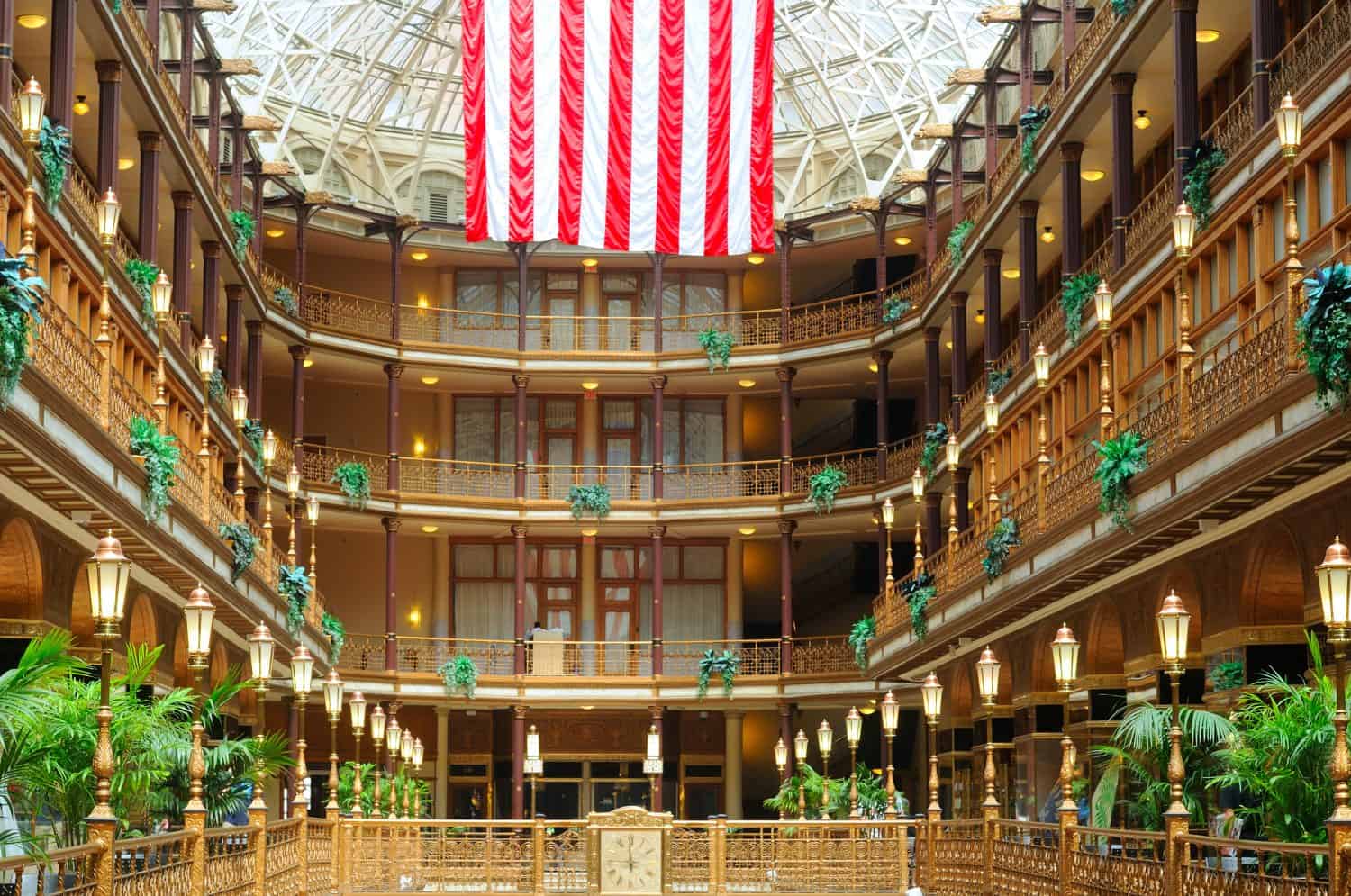
©Kenneth Sponsler/Shutterstock.com
Located in Cleveland, this Victorian-era building is a sight to see! The Arcade shopping mall opened in May of 1890 and was one of the first indoor shopping centers in America. This shopping center was modeled after the Galleria Vittorio Emanuele II in Milan, Italy. Still immaculately preserved, the Arcade allows shoppers to transport themselves back to the 19th century. Nicknamed Cleveland’s Crystal Palace, it features two 9-story buildings, joined by a five-story arcade with a 300-foot-long glass skylight. Offering places to shop, dine, and explore, this NHL is one of the most fun historic sites in Ohio.
2. Hopeton Earthworks
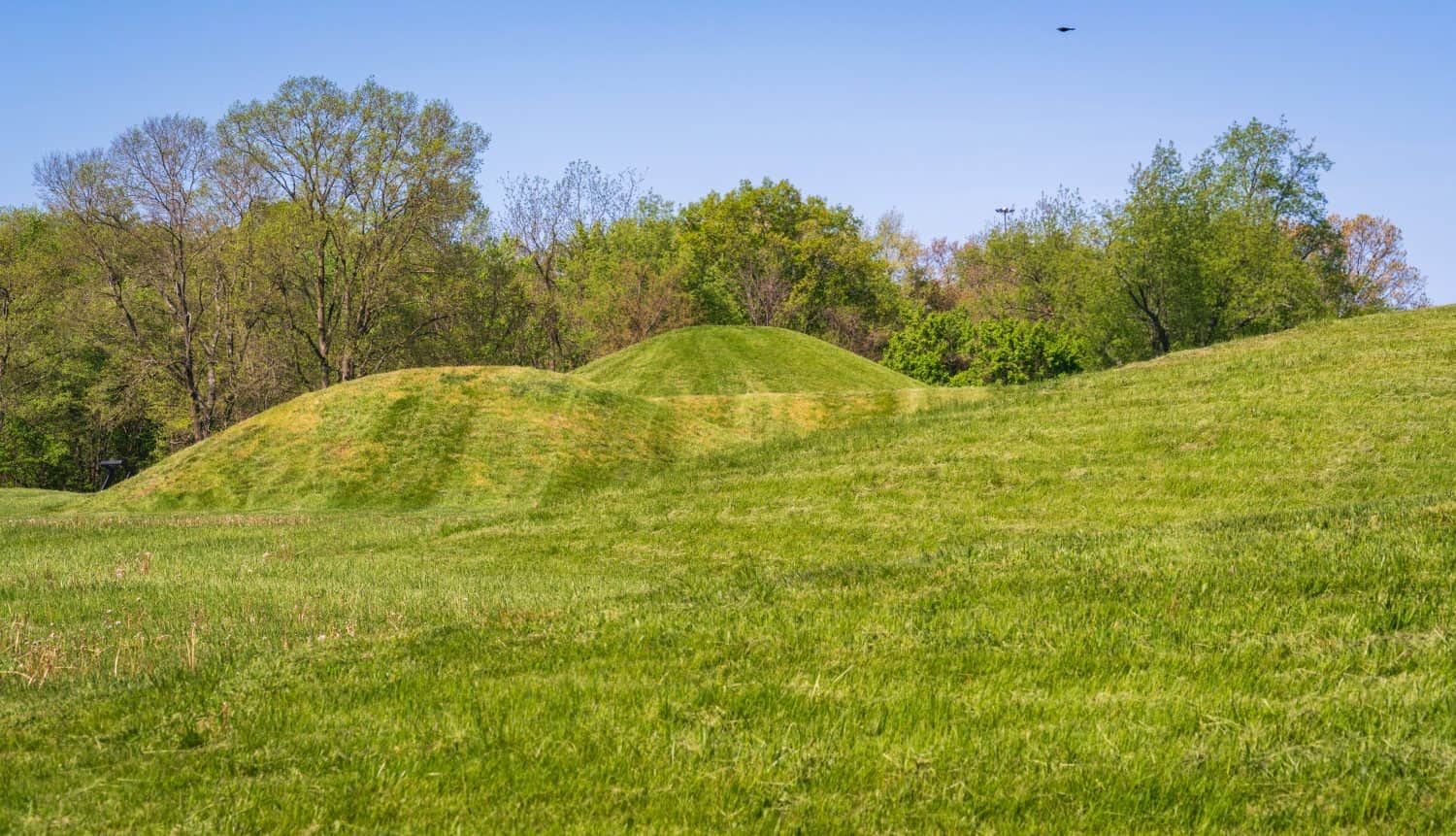
©Zack Frank/Shutterstock.com
Between 200 BC and 500 AD, the Hopewell were the predominant indigenous people residing in the region. The Hopewell specifically were the indigenous people who thrived in the area between 200 BC and AD 500. The native group was widely known for building mounds and earthworks. For background, this refers to all operations enacted to prepare land for construction or landscaping. The Hopeton Earthworks national historic landmark is just a small part of the Hopewell Mound City Group, located about a mile away. Throughout these protected sites are the largest collection of Hopewell culture burial mounds in eastern North America.
1. Serpent Mound
©Seen Unseen Media/Shutterstock.com
The Serpent Mount national historic landmark is a whopping 1,348 feet long and three feet high. Located in Peebles, this national historic landmark is a prehistoric effigy mound. It sits atop the plateau created by the Serpent Mound crater along Ohio Brush Creek in Adams County. Experts have developed several theories to explain the purpose of the Serpent Mound, but its ultimate reason still remains a mystery.
This archaeological site is a sacred location with deep spiritual connections. Since the serpent was a source of spiritual power for a pre-Columbian culture, this could have been a significant religious site for ancient groups. Others believe it was an ancient way of marking the passing of the seasons. This is because the head of the serpent aligns with the summer solstice sunset, while the tail points to the winter solstice sunrise. Some theorize it could have also been a monument to help lost souls find the North Star, or simply to guide spirits. Regardless of the true reason behind its development, it is still a mind-blowing NHL site!
Summary of the Top 10 National Historic Landmarks of Ohio
| Number | Landmark | County |
|---|---|---|
| 1. | Serpent Mound | Adams County |
| 2. | Hopeton Earthworks | Ross County |
| 3. | The Arcade | Cuyahoga County |
| 4. | Plum Street Temple | Hamilton County |
| 5. | Cincinnati Observatory | Hamilton County |
| 6. | Fort Ancient | Warren County |
| 7. | Fallen Timbers Battlefield | Lucas County |
| 8. | Eldean Bridge | Miami County |
| 9. | Cincinnati Union Terminal | Hamilton County |
| 10. | Cincinnati Music Hall | Hamilton County |









